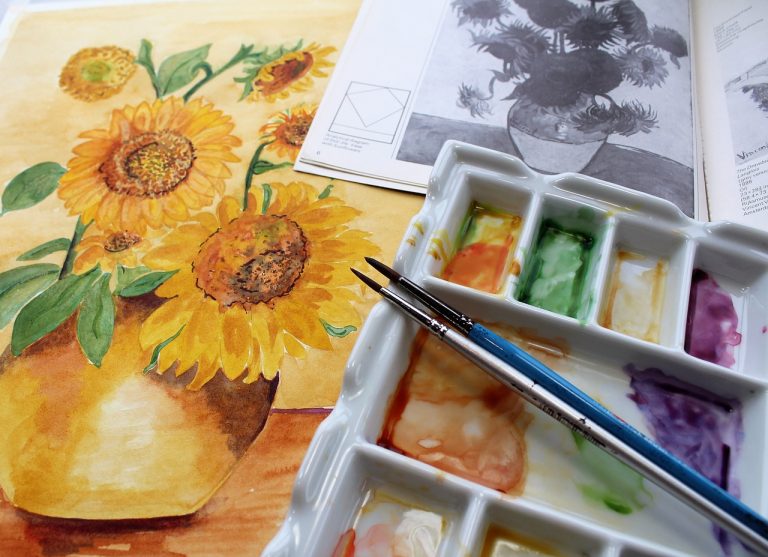Is Watercolor Paint Safe For Skin & Face Painting?
Who doesn’t love face painting?
Whether it is a part-time job at the local fair or a fun activity for your friends, face painting is something that you can enjoy year round, no matter the weather or what your level of experience is.
Odds are, you have an old watercolor set sitting around in your craft room. Your instinct might be to reach for that watercolor set and get to work on your face painting.
But while watercolor paint might be convenient, it is not necessarily the ideal medium to use on skin.
Watercolor paints contain pigments that have a varying degree of toxicity. Although they are harmless when used on paper, not all watercolor paints are safe to use on your skin or face. It’s better to use face paints that are designed to be used on skin.
Want to know why?
Then keep reading!
What Is Watercolor Paint Made Of?
Watercolor paint is made from a color pigment that is dispersed in a suspension called a binder. This binder allows the watercolor pigment to bind to a surface when dry.
There are different categories of pigments used in watercolors.
Among these categories are: natural inorganic (metal or earth pigments from natural deposits), synthetic inorganic (metal or earth pigments created by combining raw chemicals and ores through industrial manufacture), natural organic (pigments made as extracts from animal or plant matter), and synthetic organic (carbon-based pigments often made from petroleum compounds).
While most watercolors are non-toxic, that doesn’t mean that all of them are safe to be used on skin.
Some watercolor brands can irritate the wearer’s skin, and take longer to come off of skin once applied. It is also important to note that different people can have different levels of sensitivities to the different materials in watercolor paint.
Is Watercolor Paint Toxic?
Although the toxicity of watercolors depends on the brand and the color, none of them are deadly. Moreover, most watercolor paints are classified as having “no substances in sufficient quantities to be toxic to humans”. If watercolors are used as intended, they don’t form any health risk.
However, this doesn’t include using watercolor paint for face painting. The pigments aren’t meant to be used on skin, and might even be absorbed by the skin.
Cadmium-based pigments in particular are more toxic than other pigments. So you definitely want to stay away from very vivid yellow, oranges, and red, since they normally contain cadmium.
Best Paint For Face Painting
Now that you know what not to use, it’s time to look at some safe alternatives for face painting or other activities involving painting on your skin.
When in doubt, the best option is to purchase a paint specifically meant for face painting. Like with any other type of art supplies, there are seemingly endless options to choose from for face paint.
There are brands of face paint specifically aimed for kids. These may be on the cheaper side, which means they offer a great way to practice your face-painting skills without spending money on expensive paint.
While aimed at kids, these paints are perfect for anyone looking to expand their artistic talents. The kits often include stencils to help you hone your skills, and are hypo-allergenic, paraben free, and non-toxic.
If you’re looking for a paint that falls closer to the make-up side of things, you should consider purchasing either a glycerin based paint. You can also look for a paraffin wax and/or Acacia Senegal Gum based paint. These paints resemble the materials used by special effects artists and make-up professionals. They are water activated, easy to use, and feature bold, stand-out colors.
These are the types of paints used for special effects in movies, or for striking Halloween costumes. They may be more expensive, but will give you beautiful results once you master them.
Here are a few face paints you might want to try out:

